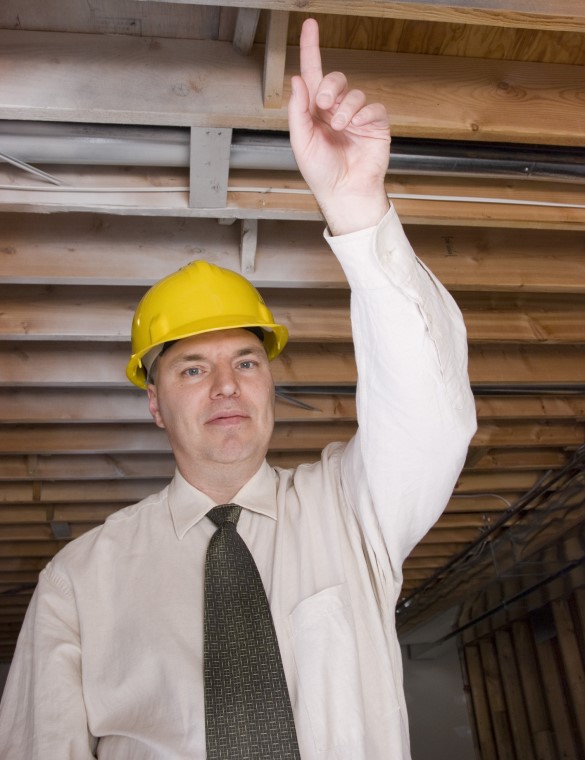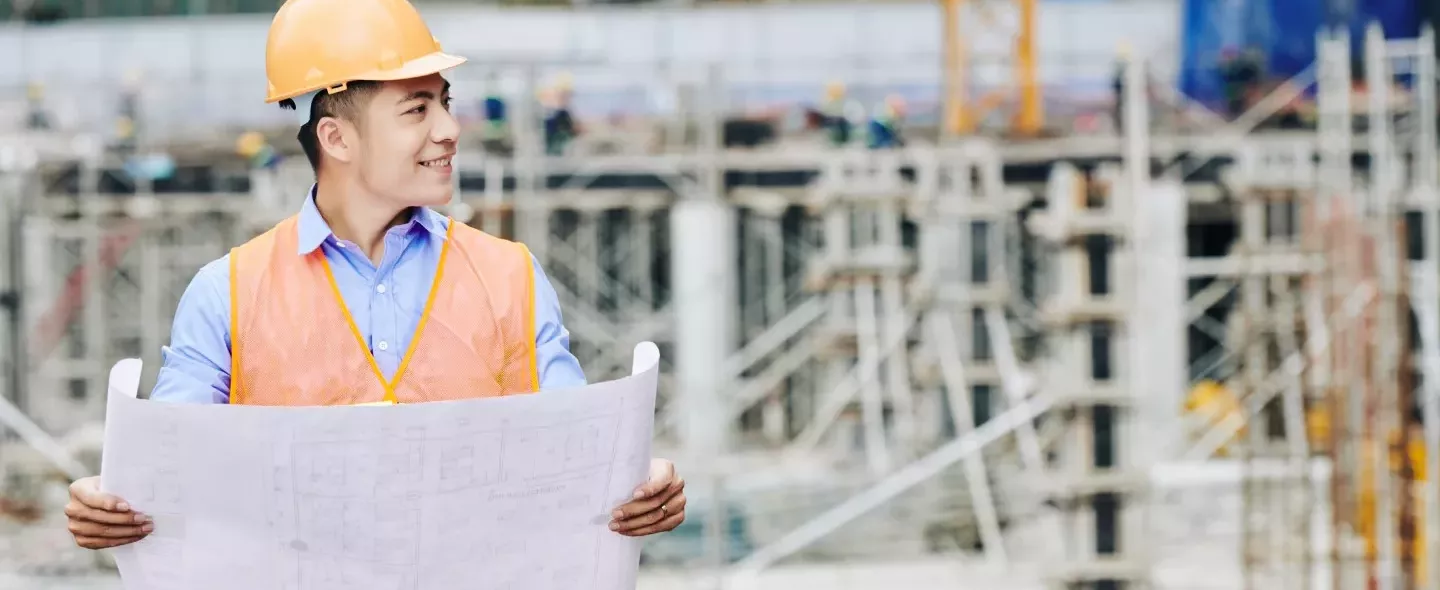It can be advisable to have a structural inspection carried out on a home to gain insight into the structural condition of the building. We can also carry out a baseline measurement, visual-only structural inspection and acceptance inspection for you.
Do you have your eye on a house? Then it’s advisable to have a structural inspection carried out. It will give you insight in the home’s condition, an estimate of any restoration costs and you will have a stronger legal position with an eye to your duty of investigation. Our expert inspectors will view and report on numerous aspects of the home. Is your lender asking for a structural report? All our reports have the necessary National Mortgage Guarantee Scheme (NHG) annexes. We carry out structural inspections on all kinds of buildings in accordance with the applicable standards, providing a clear explanation and reports.

Talk to our experts
To carry out the structural inspection, one of our structural engineers will visit the home. Naturally you can be present for this. During the inspection of the home, the inspector assesses all kinds of structural aspects. Upon completing the inspection, the inspector will describe his findings in a detailed report that you will receive digitally. The parts of the home that will be inspected include the facades, floors, cellar, sewer, the roof and roof construction, sanitary facilities, the door and window frames, water pipes, chimney, roof penetrations, kitchen, stairs, tiling, paintwork, builders’ hardware and sealants. All these elements are realistically assessed, and you are informed of any possible defects and shortcomings the home has. You will also receive an estimate of the costs of any repair or restoration work in the short and medium term.
Thanks to these results, you will know what you can expect, you’ll be able to negotiate from a better position and the bottom line is that you will be able to take a far better informed decision about purchasing the home or commercial building in question.

Housing Valuation
System (WWS)

The amount of rent you pay, is determined in your rental contract. The amount of (base) rent permitted depends on how good your rented home is. The WWS points system awards points on the basis of the quality of a rented home. WWS stands for WoningWaarderingsStelsel – which is to say housing valuation system. Each part of the home, such as the surface area, the energy label or the sanitary facilities, is awarded a number of points. The total of these points indicates the maximum rental price which is redetermined every year. We carry out a survey of the home on the basis of the WWS points system and calculate the number of points and thus also the maximum base rent for your home.
If necessary, (for a small surcharge) when assessing the energy label, we can also determine the WWS points again. Perhaps you are slightly reticent about this initially, but experience has shown that organisations often feel differently about this afterwards. In, practice, point are often lost due to things that are simple to achieve such as tiling the kitchen or bathroom.
The amount of rent you pay, is determined in your rental contract. The amount of (base) rent permitted depends on how good your rented home is. The WWS points system awards points on the basis of the quality of a rented home. WWS stands for WoningWaarderingsStelsel – which is to say housing valuation system. Each part of the home, such as the surface area, the energy label or the sanitary facilities, is awarded a number of points. The total of these points indicates the maximum rental price which is redetermined every year. We carry out a survey of the home on the basis of the WWS points system and calculate the number of points and thus also the maximum base rent for your home.
If necessary, (for a small surcharge) when assessing the energy label, we can also determine the WWS points again. Perhaps you are slightly reticent about this initially, but experience has shown that organisations often feel differently about this afterwards. In, practice, point are often lost due to things that are simple to achieve such as tiling the kitchen or bathroom.
Prior Survey (Baseline Measurement)
During construction work, damage can occur in (neighbouring of adjacent) buildings, constructions, structures or infrastructure. A prior survey (baseline measurement) is essential for every owner of a building in the immediate vicinity of (heavy) construction work. This is the case for private owners, but also for contractors, insurance companies, local councils, construction companies and housing associations.. By recording the defects already present beforehand, it can be determined whether the building party is responsible for any damage or not. If so, then the baseline measurement report will be an excellent point of departure for all the parties involved to calculate the damage.
In practice, we see that carrying out prior surveys or baseline measurements above all has a preventive effect on damage claims. For the issues that are in play, an answer can quickly be found to determine the liability (causality) and the scope of the damage, avoiding long-lasting discussions and procedures. Our experienced inspectors know exactly what to look for during the prior surveys and include all the relevant findings in a clear report.
During the prior survey, the structural state and condition of a building is determined. A detailed inventory is made of all damage, such as cracking, and recorded. You know exactly what condition your building is in, and that can be very useful if heavy construction work is to be carried out in the immediate vicinity of your building. If damage occurs to the building after the baseline measurement, you can immediately prove this and hold the responsible party liable for it.
So the baseline measurement is useful when your building is in an area where construction work will occur, i.e. where there is a high risk of your building incurring damage. This often occurs when heavy work is carried out in the immediate vicinity of the building such as driving piles, excavation, heavy transport, lowering the groundwater level, speedbumps, etc.
As a result, for example, your building can tilt, plasterwork or tiling can fall off. The baseline measurement that you had carried out prior to the construction work means that you will not have to bear the costs.
Our baseline measurement report can be used as evidence and is accepted as such. The prior surveys are after all neutral and independent. We will handle your situation with discretion and the report of the prior survey (baseline measurement) serves as evidence that can be used against the party responsible for the damage to your building.
Moisture Inspection
Moisture problems can lead to significant damage to constructions and have various causes. That is why it is important to pinpoint the cause. A moisture inspection will help you with this.
During a moisture inspection, we inspect the elements that might be related to the nature of the moisture problem. We also look at where the moisture might be coming from and whether the problem should be resolved indoors or outdoors.
Afterwards, we analyse the findings and you will receive a detailed report and indication of any repair costs. This will allow you to take a well-informed information decision on how to proceed.
Moisture problems are very annoying and must be handled promptly to avoid further damage. In the first phase of determining the cause, it is important that a skilled and experienced inspector take a good look at the overall picture. Only by doing this is it possible to gain complete insight in the problems and solutions.
The inspector will first look at the composition of the home or building. What is its construction? Which building materials have been used? He will then look at the types of moisture problems. Is there ground moisture, penetrating moisture, hygroscopic moisture, rising moisture or condensation? Measurements can also be conducted to determine the moisture content and penetration levels.
Visual-only structural inspection
For a visual-only structural inspection, one of our experts will visit the home or commercial building concerned. Together with you, he will look at the building with an expert eye to assess its structural condition. Any defects will immediately be indicated and discussed; our expert can often also give an estimate of the repair costs. So a visual-only structural inspection is a structural inspection without a written report, making it less expensive.
During the visual-only structural inspection, you might furthermore receive handy maintenance tips for your home that are often not widely known. After the inspection there is also time to discuss with the expert, who will give you his general impression and where necessary can discuss individual points with you. You can include this in your decision of whether or not to purchase.
Acceptance inspection
Whilst the contractor or another selling party accompanies you through the home and explains all the important aspects of and in the home to you, our structural inspector will join you and assess whether it meets all the (reasonable) standards and requirements agreed upon, as well as the technical description and the drawings.
The purchase of a home or building is naturally also a business agreement, in which both parties have to fulfil their obligations. If the contractor or another selling party does not fully do so, it is important to immediately record this properly to avoid it being inferred that you have accepted the situation. Our structural expert will substantiate the shortcomings observed and will professionally counter any objections.
Our (concise) acceptance report, will provide you with an overview of the shortcomings observed, which at the end of the discussion will be discussed again together with the contractor or other selling party. The acceptance report drawn up by that party is a list of the agreements reached about the shortcomings observed at the end of the acceptance.
The concise acceptance report will often contain shortcomings and comments that were directly resolved by the contractor or other selling party during the inspection. These points often do not appear in the official acceptance report of the contractor or other selling party. When the shortcomings have been resolved, our concise report will help you verify whether all the items included have indeed been resolved.
Would you like advice on our studies?





